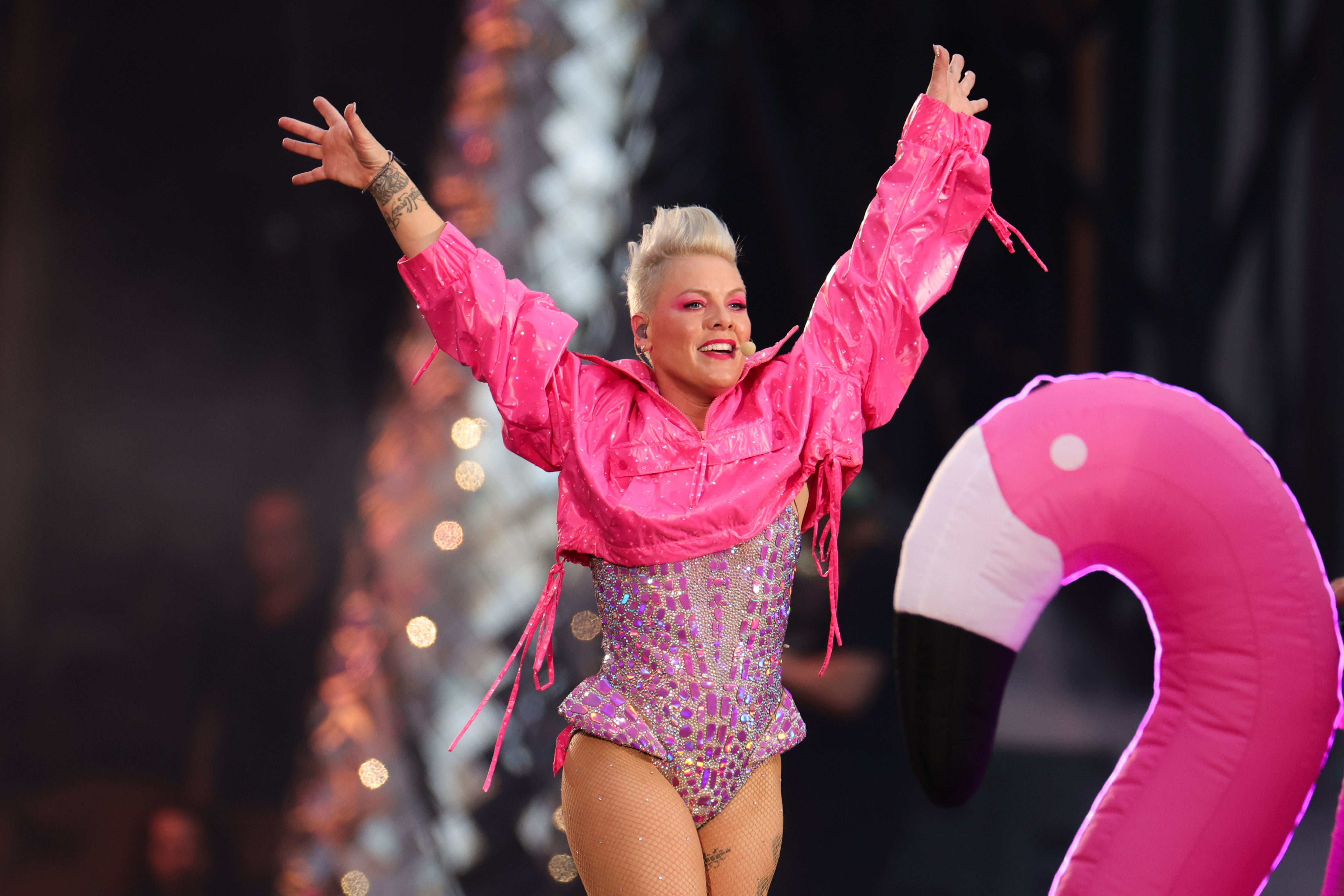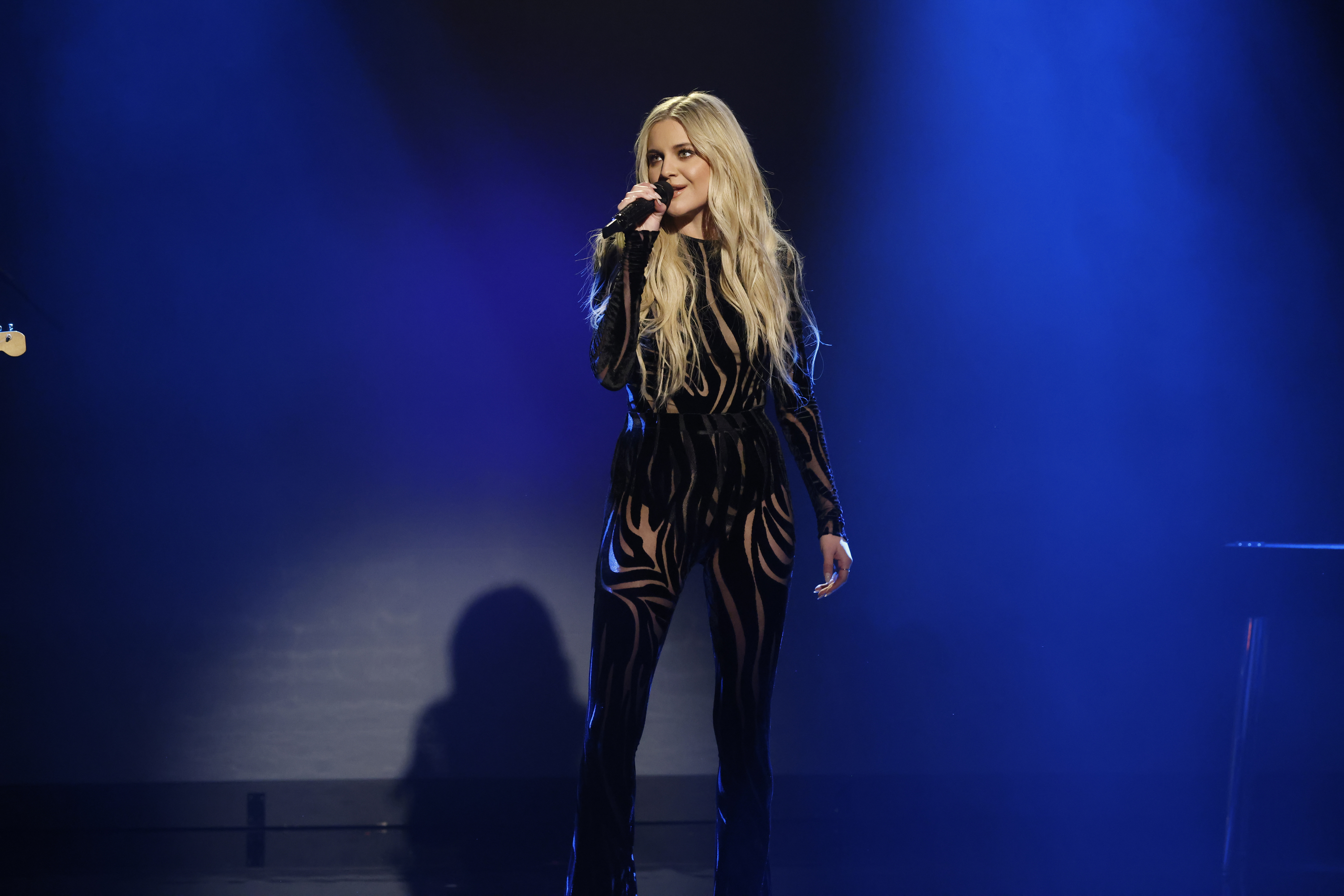From flinging bras to tossing flowers, concertgoers have long been a bit extra in showing adoration for their beloved artists — but a recent spate of artists being hit by weightier projectiles raises concerns about extreme fan culture and security.
Country singer Kelsea Ballerini was the latest artist to be struck by a flying object, Wednesday evening at a Boise concert. In the moment caught on video, Ballerini is playing her guitar onstage when a bracelet hits her face and she takes a step back.
Ballerini, clearly caught off guard, takes a moment before a brief intermission is called.
“Hi, i’m fine,” she later said on Instagram. “Someone threw a bracelet, it hit me in the eye and it more so just scared me than hurt me.”
Get Connecticut local news, weather forecasts and entertainment stories to your inbox. Sign up for NBC Connecticut newsletters.
Ashley Highfill, 30, was at the Idaho Botanical Garden show and said Ballerini seemed visibly upset. Highfill, who often attends concerts with her friends, said it’s become a normal occurrence to see fans throwing items onstage at concerts.
“Stuff like that can be very dangerous,” she said. “It’s disheartening to see even though there is no bad intention, people are not thinking of the consequences that these people are putting on a show.”
That same day, rapper Sexyy Red cut short her own show when fans refused to stop throwing water bottles at the stage.
Morgan Milardo, managing director of the Berklee Popular Music Institute in Boston, said some venues will have signs that say “no mosh pits” or “no crowd surfing” — but perhaps signs that explicitly say “no throwing items at the stage” now need to be added to protect artists.
“Everyone in attendance at a concert is responsible for keeping one another safe,” she said. “Concerts are supposed to offer a community where folks can come together to share in the magic of live music, not have to worry about a chicken nugget hitting them in the eyeball.”
Long gone are the days of in-person fan clubs, but social media users can join in with the Swifties or the Beyhive at any moment online or get daily updates from accounts run by or dedicated to celebrities. Social media has created a deeper sense of connection and emotional closeness for fans, said Laurel Williams, a professor of psychiatry and behavioral sciences at Baylor College of Medicine.
That sense of closeness played out at a recent concert where one fan tossed their mother’s ashes onto the stage as Pink was performing.
“Is this your mom?” Pink asked the fan. “I don’t know how to feel about this.”
Concert behavior gone bad
Summer performances took a weird turn in June, with several artists being struck by objects while on stage.
David Schmid, a pop culture expert at the University at Buffalo College of Arts and Sciences, said the idea of tossing items on stage historically goes back to the etymology of the word “fan.” Short for fanatic, it was a term originally associated with religious devotion. And many tend to see celebrities “as if they are gods or at least semi-divine beings,” he said.
“From that perspective you can read the stage as a kind of altar and the objects that are thrown onto the stage as devotional objects,” Schmid said.
The role of social media has also changed the nature of the items being thrown onstage. Rather than toss a note, some are hurling heavy cellphones onstage, hoping the performer will grab it and record a moment for them. In some cases, it ends up being a dangerous grab for attention.
A man was arrested after throwing a cellphone that struck pop star Bebe Rexha in the face on June 18. According to a court criminal complaint, the man later told a third party that he hit the artist because he thought “it would be funny.” After the New York concert, Rexha shared a photo of her black eye and bandaged face to Instagram, with a thumbs up.
“Im good,” she said in the post.
“Although the show ended in an unfortunate way it was still an amazing show in my hometown,” she wrote in a subsequent post.
While female artists have been the targets this month — including singer Ava Max, who was slapped at her Los Angeles show — even male performers like Harry Styles have faced projectiles heftier than underwear. At a November 2022 concert, Styles could be seen tossing his head back in pain after he was hit in the eye by a projectile.
Mid-concert provocations from fans aren't necessarily new: Rock legend Ozzy Osbourne notoriously bit the head off a live bat after a fan tossed it to him onstage. Some punk fans might remember the days when concertgoers would spit at artists to show appreciation.
But with such behavior seemingly becoming more mainstream, venues, promoters and artists might look to reinforce security.
Paul Wertheimer, founder of Crowd Management Strategies/Crowdsafe, said artists often have security contracts with the promoter that lists out what kind of security the artist will pay for or wants at the show. Venues can also decide to limit what can be brought inside or sold at the event space.
“You need to have proper security to protect the artist,” Wertheimer said.
After the deadly 2021 Astroworld crowd surge, protocols around safety at concerts have been called into question. With recent advancements in surveillance technology, like facial recognition and crowd monitoring with artificial intelligence, fans may no longer be able to fade into the crowd after hurling a personal item at their adored artist — even if done in jest.
“The stage is an immensely powerful place on one level but it also a place where you are extremely vulnerable,” Schmid said.



